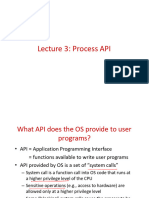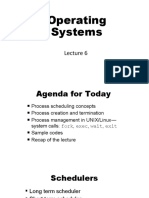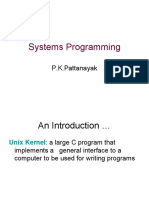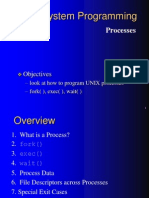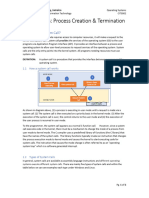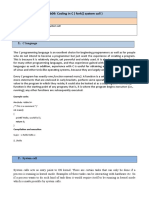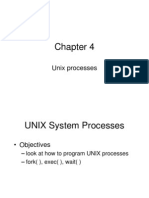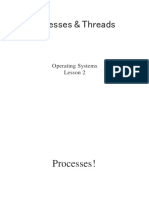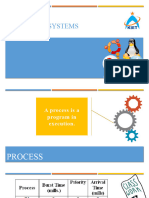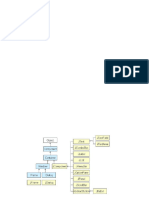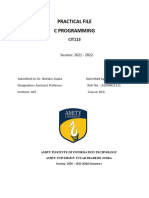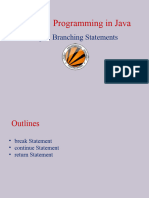0% found this document useful (0 votes)
11 views25 pagesProcess Syscall
The document discusses system calls for process management in operating systems, focusing on APIs that allow user programs to create, run, and terminate processes. It explains key system calls such as fork(), exec(), exit(), and wait(), detailing their functionalities and how they interact with processes. Additionally, it covers concepts like portability through POSIX compliance, the role of the init process, and mechanisms for I/O redirection and piping in shell commands.
Uploaded by
sharvari solapureCopyright
© © All Rights Reserved
We take content rights seriously. If you suspect this is your content, claim it here.
Available Formats
Download as PDF, TXT or read online on Scribd
0% found this document useful (0 votes)
11 views25 pagesProcess Syscall
The document discusses system calls for process management in operating systems, focusing on APIs that allow user programs to create, run, and terminate processes. It explains key system calls such as fork(), exec(), exit(), and wait(), detailing their functionalities and how they interact with processes. Additionally, it covers concepts like portability through POSIX compliance, the role of the init process, and mechanisms for I/O redirection and piping in shell commands.
Uploaded by
sharvari solapureCopyright
© © All Rights Reserved
We take content rights seriously. If you suspect this is your content, claim it here.
Available Formats
Download as PDF, TXT or read online on Scribd
/ 25










